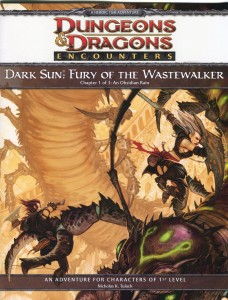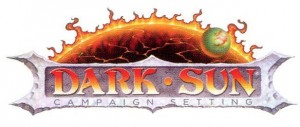 One of the first articles published at Dungeon’s Master was our take on the Necromancer. Since that time we’ve produced a revised version of our heroic, paragon and epic tier take on the class, along with a general write up on different kinds of Necromancers. The Necromancer as envisioned by us was developed to address the fact that there were no Wizard specialists in 4e D&D. Along the way we’ve toyed with the idea of releasing a build of the class that is built on the Warlock and Cleric structure as well.
One of the first articles published at Dungeon’s Master was our take on the Necromancer. Since that time we’ve produced a revised version of our heroic, paragon and epic tier take on the class, along with a general write up on different kinds of Necromancers. The Necromancer as envisioned by us was developed to address the fact that there were no Wizard specialists in 4e D&D. Along the way we’ve toyed with the idea of releasing a build of the class that is built on the Warlock and Cleric structure as well.
Category: Editorial
 This week I got a double dose of Dark Sun. I was on vacation last week, but before I left I made arrangements with 6 players to skip the first week and run encounters one and two back-to-back this week. After just two sessions of Fury of the Wastewalker I have to admit that I like this adventure a whole lot more than Halaster’s Lost Apprentice.
This week I got a double dose of Dark Sun. I was on vacation last week, but before I left I made arrangements with 6 players to skip the first week and run encounters one and two back-to-back this week. After just two sessions of Fury of the Wastewalker I have to admit that I like this adventure a whole lot more than Halaster’s Lost Apprentice.
D&D Encounters is a 15-part adventure from Wizards of the Coast and it’s played out one encounter each week over 15 weeks.
DMs are encouraged to say yes whenever possible in 4e D&D. But in a recent game we experienced a situation that was very unusual and saying yes didn’t seem appropriate. As the DM I said no at the time but agreed that we should do some investigation before the situation happens again. I’ve been scouring the boards to see if anyone else has encounter the same problem and after two weeks of searching I haven’t found a definitive answer. So for the first time since we started Dungeon’s Master I’m asking our readers for their thoughts and interpretation on the correct way to interpret this ruling. I suspect that there won’t be a clear-cut right or wrong answer, but I’d like to get some input from the online 4e D&D community before my next home game.
 The first session of D&D Encounters: Dark Sun was a sink or swim lesson in desert survival. This second season of the program takes place on the world Athas, an endless expanse of sand and searing heat having been blasted lifeless by the ravaging effects of magic. On Athas the majority of the population swelters in the heat of oppression in slavery while tyrannical sorcerer-kings live lavish and absurd life styles within the walls of their city states.
The first session of D&D Encounters: Dark Sun was a sink or swim lesson in desert survival. This second season of the program takes place on the world Athas, an endless expanse of sand and searing heat having been blasted lifeless by the ravaging effects of magic. On Athas the majority of the population swelters in the heat of oppression in slavery while tyrannical sorcerer-kings live lavish and absurd life styles within the walls of their city states.
Welcome to Athas! Following an introduction to the world that our characters found them selves in, we joined the action as we took part in a caravan as guards. Since resources are so scarce on Athas and the wilderness is inhabited by cruel raiders (not to mention cannibalistic Halflings), cargo moves from city to city in large caravans fortified by hired swords fighting to earn their next meal. It is on this errand that our party was devastated by a rain of jet black obsidian from above which obliterated the majority of the caravan after only one days travel from civilization. It was after most of the caravan was killed by falling stone when we were ambushed.
As lizard men began to raid the wagon train a very strong tone was set that I hope will persist throughout the arc of the season: Life on Athas is pragmatic at best. Where did that obsidian come from? Why is in raining on us? I suspect that these questions and many more will never be answered. Our characters didn’t have time to ponder the source of our assailant because we had the task of grabbing as many days’ supplies as we could before running for our lives into the endless desert. You know that the circumstances are dire when the best course of action includes a life denying wasteland.
In grade 5 my teacher asked the class if we could only have one song playing as our theme song, what would it be?
For the life of me I don’t recall what song I selected. However, John Arcadian’s post at Gnome Stew got me thinking about this again. John highlights the tool Pandora. Now, because I live in Canada I don’t have access to this nice tool. I do however have access to my ipod and all the CDs I still haven’t copied over to a digital format.
John’s article brought me back to that question my grade 5 teacher asked, only this time it was what songs would compose my D&D soundtrack?
 Dark Sun is coming later this year. In anticipation of the release of the next 4e campaign setting I’ve been doing my homework about the campaign setting. I never played Dark Sun when it was originally released, nor did I even purchase the box set. Though the setting looked interesting I never made the decision to get myself a copy. As a result I’ve apprehended Ameron’s copy and have been doing some reading.
Dark Sun is coming later this year. In anticipation of the release of the next 4e campaign setting I’ve been doing my homework about the campaign setting. I never played Dark Sun when it was originally released, nor did I even purchase the box set. Though the setting looked interesting I never made the decision to get myself a copy. As a result I’ve apprehended Ameron’s copy and have been doing some reading.
Athas always appeared as a very savage, destructive and hard land. This is what the artwork has led me to believe, reading other people’s thoughts on the setting and of course reading through the source books themselves.
When Players Kill the Campaign
Players inevitably do the unexpected. A good DM anticipates the most likely options and plans for them. After all there are only so many choices during a dungeon crawl. But what happens when the unexpected scenario involves the characters themselves and not the choices they make? How can a DM prepare for players who want to changes their characters without warning? How is the long-term camping affected when the players decide that they want to try something new?
I’m the first to admit that some character builds are stupidly powerful. These are usually the result of creative players scouring through character builder and looking for loopholes to exploit. I fall squarely into this camp. My feeling is that if I do my homework and find a really cool and atypical build that gives me an unexpected advantage then I deserve it. But every now and then a build or power gets used in a way that it clearly wasn’t designed for, and after much abuse Wizards steps in and updates the rules. The latest causality to befall this fate is the Daggermaster paragon path.
Earlier this week Wizards of the Coast released a sizable Rules Update (errata) and although it makes a bunch of powers and items clearer, it also closes the exploited loopholes in some build and powers. I know that I have three different LFR characters that need some significant rework following this update.
Death and Resurrection
Resurrection is a part of most fantasy games. Resurrection sits very comfortably next to fireballs and disintegration spells in the magic toolbox, but the player’s access to resurrection has a huge impact on more then the way that they die, it will have an impact on the tone of the entire game world.
Some of your fellow gamers may have had close and devastating experiences with death in their family or community. The topic of loss of life should always be discussed with respect for the fallen and for the survivors who carry their legacy. This article addresses death as it takes place in role playing games and is not intended to be a statement on the value of life.
Consider the treatment of death as the starting point for the flavor of a campaign setting. You should consider it the first decision you make about the world your PCs inhabit, even before you address issues like the number of continents or the role the gods play. Knowing and understanding the value of life in your campaign will dictate how PCs interact with their world.
The Best of Dungeon’s Master
The Dungeon’s Master team needs your help. Throughout the month of May we want you – the readers – to help us determine our very best articles. Since launching Dungeon’s Master back on February 1, 2009, we’ve written 365 articles (so far). Every week we continue writing more and more about 4e D&D. As our archive continues expanding we want to make sure that our best articles are being read by DMs and players who will get the most out of them. By asking you to help us choose our very best work, we get an opportunity to shine a spotlight on articles that our newer readers may have missed the first time they were published.